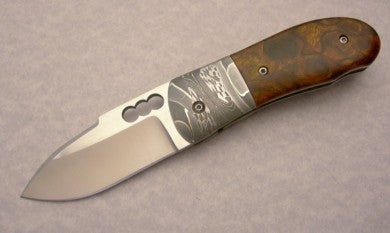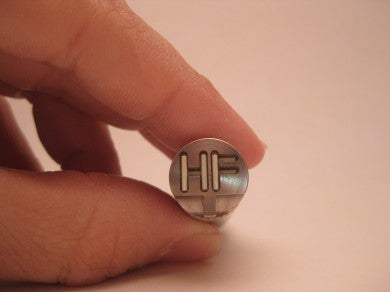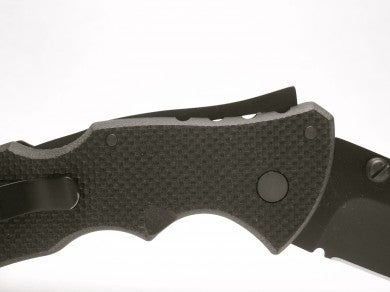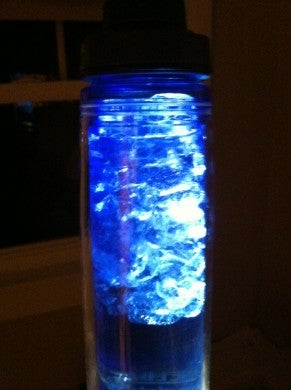Unsolved problems in EDC gear
Tony Sculimbrene 09.11.13

We get inundated with “new” gear every year, but the vast majority of stuff is the equivalent of a new coat of paint or at most new sheet metal. On occasion we actually get a new chassis, and this being the Golden Age of Gear, it means that quite a bit of the truly new stuff is amazing. But there are some lingering problems that no one has figured out how to deal with yet. Here are six unsolved problems in EDC gear.
Fog Free Wallet ID Windows
Even the best of the next gen wallets falls down when it comes to the ID window. An increasing number of states and stores have laws or regulations that require IDs as proof of purchase, and so the ID window, which lets you flash your ID without removing it from the wallet, is a crucial component in any wallet design. But we are still plagued by plastic film ID windows which become cruddy and yellow in less than a year. Eventually they become so foggy they are useless. And now that we have sail fabric that is literally bulletproof and leather that has 100 year warranties, these ID windows are the weakest link in wallet designs.
There are a few attempts to fix the problem. Saddleback Leather has a wallet that has an ID window that has no plastic at all. I think that is one solution, but my worry is that the frame of leather will curl over time (as leather is wont to do) and eventually the ID will become loose. A better solution might be the inclusion of some bands of ultrahigh friction material (such as the bubble sheets used in kitchen drawer liners) or a change in material for the window itself. Some high strength plastic screen material seem to work Chum wallets or perhaps designers could use very thin acrylic or other fog free plastics. Your wallet might last a lifetime, but the most important part, the ID window won’t make it a year. This is a problem in need of a solution.
Glove Friendly Deployment Methods
Suppose you are a person that uses their knife for a living, a LEO or a rancher or someone doing electrical work. All three of those jobs are usually done with gloves on and while some knives, such as the Manix 2 or the Paramiltiary 2, have deployment methods designed to work with gloves, these are really imperfect solutions. Making a thumb hole bigger works, but only to the extent that no one with big hands needs that knife. The Wave feature and autos are great with gloves, but for non-LEO folks those things can cause panic or are outright illegal (I am working on a piece on the stupidity of switchblade laws, but that is coming down the line). What we need is a deployment method that works with gloves and doesn’t send waves of fright into onlookers.
Flippers are decent, but you really need a pretty massive flipper, like that on the ZT 0560, for gloved deployment. The tiny flipper on the AG Russell Skorpion doesn’t do it. There are some very sharply cut thumb holes, like those on the Skorpion, that probably have enough traction to snag even a gloved thumb, but that means the knife is uncomfortable to use without gloves. Of the solutions out there, Chuck Gedraitis’s Shark Bite deployment method is probably closest to the ideal deployment method for a gloved hand.
(Image from Chuck Gedraitis, of a Small Snubnose with Desert Ironwood handles and Shark Bite Opener used with permission and knowledge.)
Seeing it on some production folders, like a large hard use knife, would be really great.
Instant Access Flashlight UI
Twist, click, rotate, pull whatever, there is no easy way, right now to use one motion and get any output you want from a light. I want a UI that lets me do one thing (and not a press versus a hold and press) and get high, medium, or low. I don’t want to have to cycle through a bunch of modes. I don’t want to have to do Morse Code. I just want high, medium, or low instantly and easily.
The MBI HF and HF-R have a very advanced UI that gets you high and low instantly with one motion, but medium requires you to pass through either high or low first. That is better than anything else out there.
One idea is to have a touch sensitive portion of the light with three spots, a high, medium, and low. It could be designed using the same material and technology in those lamps that you touch to turn on. If you touched in one spot you’d get high, in another medium, and another still low. Even more interesting would be a touch sensitive surface where you could hit one of those three spots or slide between them to vary output infinitely. They could even use the capacitive touch technology (like that in the iPhone screen) that prevents accidental activation in your pocket. Only bare skin or that special material on the iPhone gloves would work.
Debris Proof Knife Locks
The Tri-Ad lock from Cold Steel is an awesome design. It is strong, easy to use, and very familiar. But there is a problem; see if you can spot it here:
But it, like most locks on the market, collect dust and lint, like USNers collect Ti Framelock Flippers. The liner lock/frame lock/compression lock design with its open construction and fitted lock bar does a good job of keeping things clean, but a little sand, instead of lint, and the lock is challenged beyond its capacities.
I’ll admit that this is a very difficult to solve problem. ZT tried it with the Mudd design. It was okay. Another idea would be to use strong magnets to seal the pivot but allow the blade to spin. That has a lot of weaknesses. The best idea, borrowing from nature, is the new gekko surface adhesives. What if your knife lock used an adhesive (a chemical bond) instead of a mechanical lock (a mechanical break)? You might object to its lack of strength, but gecko adhesives are in a league unlike any tape you have ever encountered before. Gecko feet can hold 600 pounds per square inch. Read that again. It is mind blowing. One gecko “pad” on either side of the lock means you are dealing with roughly 1,200 pounds of lock strength, or about 50% more than the claimed strength of the Axis lock on the Adamas folder from Benchmade, no wussy blade in ANY estimation. 1200 pounds seems strong enough to me. Plus, and here is the coolest part, real gekko material (setae) is self cleaning. Our manmade stuff is not as strong (yet) or as self cleaning, but it is a start. Knife companies should be looking at this stuff right now. This is the future.
Truly Durable Insulated Water Bottles
All of these stainless steel water bottles claim that they are durable. I am not sure what they mean by durable because my four or five water bottles became unusable because of dents in about 7 or 8 months. They would hold water, of course, but they would not sit flat on tables or rest peacefully in cup holders. They do, of course, really insulate the liquid inside. Conversely the Tritan bottles can take beatings you wouldn’t give your worst enemy in a world with no consequences for your actions, but they can’t insulate anything. They do look cool, though:
This is a solution that is only a matter of someone putting two and two together. I have looked into do this myself. Ideally I’d take a Kleen Kanteen wide mouth insulated bottle and have it Line-X’d. Yes, the truck bed liner material. Line-X incredible impact resistant properties would make the Kleen Kanteen virtually impervious to dents and the bottle would almost certainly remain flatter longer. There are two problems–cost (one bottle is $50 to Line-X it plus the cost of the bottle) and hazard. If BPA is bad for you, Line-X overspray in your water bottle can’t be great. Another idea would be to put a Tritan sleeve on the outside of a stainless bottle, but that is a manufacturing solution beyond my abilities. Still, someone, do this. You will make a killing. People spend $40 on sleek Kor bottles. One that actually insulates AND is durable will sell like hotcakes. This is the iPhone of water bottles folks. Make it and they will come.
Anti-Snag Pocket Clips
The Gerber GDC Tech Skin knife is marketed as a “tech friendly” blade, one you can drop in your pocket and not worry about it scratching the bejeezus out of your smartphone’s screen. But, as with most things Gerber, its best aspect is the marketing. In reality it is made of Zytel, like about 10,000 other knives. It has plastic thumbstuds, like about 10,000 other knives. Its true tech friendliness comes from its lack of a pocket clip. That is not really a feature though and leave it to Gerber to figure out a way to market a deficiency as an advantage. Gerber is really great…at marketing.
What I want is a truly tech friendly, anti snag clip. The old Spyderco molded clips were pretty good, but they lost tension over time. The Delrin clip on the LensLight lights is a step up, but it has some retention problems. Instead, I’d like to see a clip with a metal core and a plastic outer layer. If they could make the metal piece the point of attachment and the thing that provides the tension for the clip and the plastic the protective part, it would really make knives all that much easier to carry and integrate into your life. This isn’t hard either. Folks that make eye glasses do it all of the time.
Conclusion
Even in this Golden Age of Gear there are problems to be solved. These are my six pet peeves. I know these are things folks are working on and solutions are just around the corner for some. Others, like the debris-free lock, seems like years away. Knife locks are probably not the first choice for synthetic setae. Finally, if you are a manufacturer and want to make something suggested here–take the idea, please.



